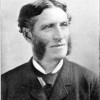
Annmarie Drury, “‘To a Gipsy Child by the Sea-Shore’ (1849) and Matthew Arnold’s Poetic Questions”
In 1843 or 1844, Matthew Arnold saw a mother and child on a pier in Douglas, Isle of Man. This sighting connects to “To a Gipsy Child by the Sea-Shore,” which appeared in 1849 in his first poetic collection, The Strayed Reveller, and Other Poems, where it is identified in the volume’s contents page under a slightly different title, “Stanzas on a Gipsy Child by the Sea-Shore, Douglas, Isle of Man.” This essay explores the poem from the perspective of lyric craft, beginning with its rhetorical strangeness and focusing on the young Arnold’s poetic experimentation. “Gipsy Child” is a lyric assay. It acknowledges Romantic antecedents while definitively diverging from them, particularly in how it deploys questions to transform the rhetorical identity of its speaker. Ultimately, the young Arnold asserts poetic authority through questioning – a gesture we can relate to the high value that Arnold later places on dialogue in other aspects of his work, as cultural critic and as inspector of schools. In terms of experience and representation, the rhetorical transformation in “Gipsy Child” raises questions about the relationship between real-world events and poetic fashioning.
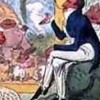
Timothy Johns, “The 1820 Settlement Scheme to South Africa”
The 1820 settlement scheme to South Africa marks an important conjuncture both for the colony’s internal development and for the rhetoric of immigration in the internal politics of Britain. Examining the rationale for the venture in light of the seminal historical event of the age—the Peterloo Massacre of 16 August 1819—and in light of Romantic notions of the “Noble Savage,” this entry attempts to demonstrate how concerns surrounding the South African scheme came to be entangled within larger debates over joblessness, slavery, class struggle, and inanition in early nineteenth-century British culture. Limiting its focus to a reading of The Emigrant’s Cabin (1822, 1834), a poem by the settler-poet Thomas Pringle (1789-1834), the entry argues that 1820 settler rhetoric navigated debates over labor through a novel engagement with time. By imagining a two-tiered system of labor time in the poem—one for settlers, based on unemployment relief and freedom from the oppressive pace of industrial life; and one for the African labor force on the eastern Cape farms, based on missionary discipline, a proto-Victorian program of “improvement,” and freedom from slavery—Pringle’s verse helped foster a British cultural identity in the Cape that resonates even today.
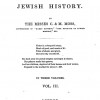
Karen Weisman, “Anglo-Jewish Culture and the Condition of England: The Poetry of Marion and Celia Moss”
In 1839, two young Jewish women poets, Marion and Celia Moss, published their first volume of poetry, Early Efforts. It is a volume laden with multiple—and often mutually contradictory—presentations of subjectivity, many of them relating to their Jewish authors’ consideration of England as a nation, an idea, and as an anchor for identity. 1839 also marks the publication date of Thomas Carlyle’s pamphlet, Chartism, in which he invoked “the condition of England question,” a phrase he coined to elucidate his dismay at the plight of the working classes and the consequent upheavals which were then roiling the nation. In bringing these two publications together under the rubric of this essay, I am hoping to shed light on some aspects of the context for Anglo-Jewish Romanticism, especially as it affects the self-understanding of its authors. Our consideration of the condition of England provides a forum in which to understand not only the grounds for agitation on the part of the disenfranchised but also the self-contradictory positions about the idea of England itself taken up with remarkable poignancy by the Mosses in their poetry. In so far as the stability of English identity depends, in part, on the cultural reification of hearth and home within the wider confines of the landscape, basic questions arise about the quotidian reality of English subjects: whose hearth, whose home, whose valorized landscape? These are the questions for the champions of disenfranchised industrial workers no less than for Jewish authors struggling to define an identity within an England which for its Jewish population has been, at turns (and sometimes simultaneously), alienating, sheltering, dismissive, grudgingly tolerant. I appropriate Carlyle’s questions of 1839 as a springboard into a discussion of the Moss poets’ volume of 1839, and its vexed reflections on their experience of England’s condition.
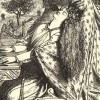
Lorraine Janzen Kooistra, “The Moxon Tennyson as Textual Event: 1857, Wood Engraving, and Visual Culture”
By convention the launch of the so-called “golden age” of wood-engraved illustration in Britain, also known as “the sixties,” is Edward Moxon’s publication, in May 1857, of Alfred Tennyson’s Poems, with 54 wood-engraved illustrations designed by 8 artists, including the Pre-Raphaelites John Everett Millais, William Holman Hunt, and Dante Gabriel Rossetti. Although the Moxon Tennyson was neither a commercial nor critical success on first publication, before the decade was out its Pre-Raphaelite designs were considered a touchstone for artistic illustration, a reputation that continues today. Without disputing the significance of this aesthetic achievement, I want to shift critical focus to the Moxon Tennyson’s status as mass-produced work of art in the age of mechanical reproduction. My interest here is in how its visual communication was expressed through its reproductive technology at the historical moment of its production and reception. This essay re-positions the Moxon Tennyson as a textual event by reading it in the context of documentary, satiric, and artistic wood-engraved images selected from the crucial six-month period after its publication. By situating the Pre-Raphaelite illustrations for Tennyson’s Poems in relation to representations in the public press of such disparate events as the Art Treasures of the United Kingdom Exhibition in Manchester, the reportage on Indian uprisings at Meerut and Cawnpore, the Matrimonial Causes Act, and the Christy Minstrels show in London, I aim to show the complex ways in which the Moxon Tennyson was a worldly event, caught up in, and contributing to, ways of seeing and knowing in 1857.
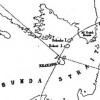
Monique R. Morgan, “The Eruption of Krakatoa (also known as Krakatau) in 1883”
This essay gives a brief overview of the events of 26-27 August 1883, when the volcanic island of Krakatoa in Indonesia exploded; it generated tsunamis which killed over 36,000 people, was heard 3,000 miles away, and produced measurable changes in sea level and air pressure across the world. The essay then discusses the findings of the Royal Society’s Report on Krakatoa, and the reports in the periodical press of lurid sunsets resulting from Krakatoa’s dust moving through the atmosphere. It closes by examining literature inspired by Krakatoa, including a letter by Gerard Manley Hopkins, a poem by Alfred Tennyson, and novels by R. M. Ballantyne and M. P. Shiel.
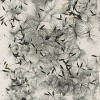
Andrea K. Henderson, “William Henry Fox Talbot: The Photograph as Memorial for Romanticism”
This essay argues that William Henry Fox Talbot’s invention of the negative-positive photographic process was facilitated by the fact that he conceived of his historical moment as one in which the ideals of Romanticism, while still attractive, were becoming increasingly untenable. Talbot found the Romantic conception of the poet as the archetypal artist deeply compelling, but he feared that he and other men of his generation might be unequal to the task of artistic creation as it was theorized and practiced by late-Romantic poets like Shelley and Byron. Talbot addresses this anxiety in a poem of his own, “The Magic Mirror,” in which he explores the possibility that a special device might preserve a poetic account of nature in the form of a visual image. For Talbot, such a technology would of necessity fall short of Romantic ideals, being an externalized manifestation of poetic power—a tool to hand rather than an inspired voice within. At the same time, he understood that it would be possessed of a magic of its own in its capacity to revive a Romantic vision of nature. This conception of the visual image as (inadequate) memorial to a poetic ideal actually empowered Talbot by enabling him to tolerate the tendency of his early experimental photographs to darken or fade, and it prompted him ultimately to produce photographs whose melancholy character constitutes an important part of their extraordinary beauty.
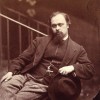
Elizabeth Helsinger, “Lyric Poetry and the Event of Poems, 1870″
Dante Gabriel Rossetti’s first volume of original poetry, by most accounts, comes at the close of two decades of Pre-Raphaelite experimentation, its 1870 publication a belated event. Yet it might as easily be taken as a sign of the future, particularly the renewed lyric inventiveness of fellow poets like William Morris, Algernon Swinburne, Christina Rossetti, George Meredith, and Gerard Manley Hopkins over the next several decades. Both the poetics and the material design of Rossetti’s 1870 volume were conceived to address crises of the moment and to show the way to a future for lyric, and especially for the lyric book. What would it mean to reverse our established scholarly perspective and read the event of Poems as its author might have hoped: in light of what followed?
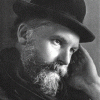
Jill Galvan, “Tennyson’s Ghosts: The Psychical Research Case of the Cross-Correspondences, 1901-c.1936”
The cross-correspondences are a well-known episode in the history of psychical research, a field that arose in the late Victorian period and was devoted to the scientific investigation of paranormal phenomena. Extending over three decades, this case was a study of possible communication from the other world. Psychical researchers collected and compared thousands of automatic writings (texts supposedly channeled unconsciously and authored by the spirits) that, while generated by several mediums, all seemed to cohere, as if spiritually orchestrated, in their tightly corresponding allusions to classical and literary lore. This essay chronicles the origins of and people involved with the cross-correspondences, together with their two most significant alleged spirit communications, the “Palm Sunday” and “Plan” messages. It then goes on to examine the patterns of allusion in the automatic writing, in order to claim the key role of Victorian poetry as constructive material: the messages, as deduced by psychical researchers, appear to be built on the stories and characters of writers like Alfred Tennyson. It was arguably this appeal to familiar literary elements of the previous century that seemed to bring the ghosts in the case to life; thus a literary analysis of the cross-correspondences can help us to understand their power to move their investigators to belief. On this reading, the cross-correspondences, though contemporaneous with the rise of modernism and with events like the Great War, are clearly a part of the “long nineteenth century.” As such they usefully emphasize the fluidity of history itself, frustrating conventional distinctions between the Victorian and the modern.
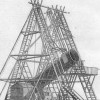
Kathleen Lundeen, “On Herschel’s Forty-Foot Telescope, 1789”
On 28 August 1789, William Herschel began exploring the cosmos with his forty-foot telescope, which would remain the largest in the world for the next half century. Though the giant instrument gave Herschel and others greater access to the deep space of the cosmos, its cultural impact extended well beyond the realm of science.
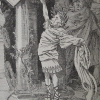
Linda Peterson, “On the Appointment of the ‘Poet Laureate to Her Majesty,’ 1892-1896”
On 6 October 1892 Alfred, Lord Tennyson, died at Aldworth, his home in Surrey; six days later, the Poet Laureate was buried in Westminster Abbey. This essay explores the controversy in the periodical press that ensued over the appointment of his successor, the debate over whether the office should represent a royal or national appointment, and the aftermath of the choice of Alfred Austin as “Poet Laureate to Her Majesty” in January 1896.
